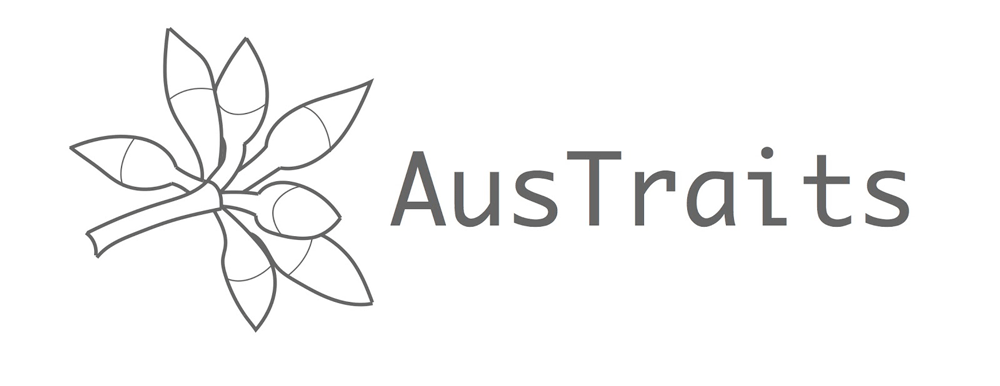Online Resources
Occurrence records map (1,209 records)
































































































Datasets
50 datasets have provided data to the Atlas of Living Australia for this species.
Browse the list of datasets and find organisations you can join if you are interested in participating in a survey for species like Pararchidendron pruinosum ()
Types
Specimens
Images
Misidentified
Names and sources
| Accepted Name | Source |
|---|---|
| Pararchidendron pruinosum () |
|
| According to:Council of Heads of Australasian Herbaria (7 July 2021), Australian Plant Census | |
| Published in:Nielsen, I., Guinet, P. & Baretta-Kuipers, T. (1983), Studies in the Malesian, Australian and Pacific Ingeae (Leguminosae-Mimosoideae): the genera Archidendropsis, Wallaceodendron, Paraserianthes, Pararchidendron and Serianthes (part 1). Bulletin du Museum National d'Histoire Naturelle. Section B, Adansonia: Botanique Phytochemie 5(3) [328] | |
| Synonym | Source |
|---|---|
| Abarema sapindoides heterotypic nom. inval., nom. nud. |
|
| Published in:Jacobs, S.W.L. & Pickard, J. (1981), Plants of New South Wales [146] | |
| Abarema sapindoides heterotypic nom. inval. |
|
| Published in:Beadle, N.C.W., Evans, O.D. & Carolin, R.C. (1962), Handbook of the Vascular Plants of the Sydney District and Blue Mountains [232] | |
| Abarema sapindoides heterotypic nom. inval., nom. nud. |
|
| Published in:Kostermans, A.J.G.H. (1954), A Monograph of the Asiatic, Malaysian, Australian and Pacific Species of Mimosaceae formerly included in Pithecolobium Mart. Bulletin. Organisatie voor Natuurwetenschappelijk Onderzoek in Indonesië 20 [38-40, fig. 25] | |
| Pithecellobium sapindoides heterotypic nom. superfl., nom. illeg. |
|
| Published in:Domin, K. (1926), Beitrage zur Flora und Pflanzengeographie Australiens. Bibliotheca Botanica 22(89) [830] | |
| Feuilleea pruinosa () homotypic |
|
| Published in:Kuntze, C.E.O. (5 November 1891), Revisio Generum Plantarum 1 [188] | |
| Albizia pruinosa () homotypic |
|
| Published in:Mueller, F.J.H. von (January 1872), The genus Albizzia: its origin and systematic limits considered. Journal of Botany, British and Foreign 10 [9] | |
| Pithecolobium pruinosum homotypic orth. var. |
|
| Published in:Bentham, G. in Hooker, W.J. (1844), Notes on Mimoseae with a short synopsis of species. London Journal of Botany 3 [211] | |
| Pithecellobium pruinosum homotypic |
|
| Published in:Bentham, G. in Hooker, W.J. (1844), Notes on Mimoseae with a short synopsis of species. London Journal of Botany 3 [211] | |
| Acacia sapindoides heterotypic nom. inval. |
|
| Published in:Bentham, G. in Hooker, W.J. (1844), Notes on Mimoseae with a short synopsis of species. London Journal of Botany 3 [211] | |
| Acacia pruinosa heterotypic nom. inval. |
|
| Published in:Bentham, G. in Hooker, W.J. (1844), Notes on Mimoseae with a short synopsis of species. London Journal of Botany 3 [211] | |
| Acacia sapindoides heterotypic nom. inval., nom. nud. |
|
| Published in:Don, G. (ed.) in Sweet, R. (1839), Sweet's Hortus Britannicus Edn. 3 [198] | |
| Common Name | Source |
|---|---|
| Monkeys Earrings Australia Australia |
|
| Snow-Wood Australia Australia |
|
| Snowwood Australia Australia |
|
| Stinkwood Australia Australia |
|
| Stinkwood Australia Australia |
|
| Tulip Siris Australia Australia |
|
| Name | Source |
|---|---|
| Pararchidendron pruinosum () accepted |
|
| Identifier | Source |
|---|---|
| https://id.biodiversity.org.au/taxon/apni/51436733 Taxon current |
|
| https://id.biodiversity.org.au/instance/apni/51436715 Taxon Concept current |
|
| https://id.biodiversity.org.au/name/apni/116514 Scientific Name current |
|
| http://id.biodiversity.org.au/taxon/apni/51436733 Taxon unknown |
|
Classification
- kingdom
- Plantae
- phylum
- Charophyta
- class
- Equisetopsida
- subclass
- Magnoliidae
- superorder
- Rosanae
- order
- Fabales
- family
- Fabaceae
- genus
- Pararchidendron
- species
- Pararchidendron pruinosum
Charts showing breakdown of occurrence records (1,209 records)
Name references found in the Biodiversity Heritage Library
| Data sets | Licence | Records |
|---|---|---|

The trait data shown here are a selection from AusTraits, an open-source, harmonised database of Australian plant trait data, sourced from individual researchers, government entities (e.g. herbaria) or NGOs across Australia. Traits vary in scope from morphological attributes (e.g. leaf area, seed mass, plant height) to ecological attributes (e.g. fire response, flowering time, pollinators) and physiological measures of performance (e.g. photosynthetic gas exchange, water-use efficiency.)
These traits are a sampler of those available in AusTraits. The data presented here are summary statistics derived from all field-collected data on adult plants available from AusTraits. Since the data presented are derived from the wide variety of sources in AusTraits, both the numeric trait statistics (min, mean, max) and categorical trait summaries (frequency of each trait value) that have been merged together could include data collected using different methods. The values presented for this species may reflect a summary of data from one or many sources, one or many samples from one or many adult plants at one or many locations. They may therefore differ from those presented elsewhere on the ALA platform and users are encouraged to download a spreadsheet of the full AusTraits data for this species via the download CSV button to view the accompanying details about the data sources before further use.
Categorical Traits
* Data sources in AusTraits report multiple values for this trait, suggesting variation across the taxon's range and life stages. Please download the raw data with information about the context of data collection to assess whether they are relevant to your project.| Trait Name | Trait Value | Definition |
|---|
Numeric Traits
| Trait Name | Min | Mean | Max | Unit | Definition |
|---|


